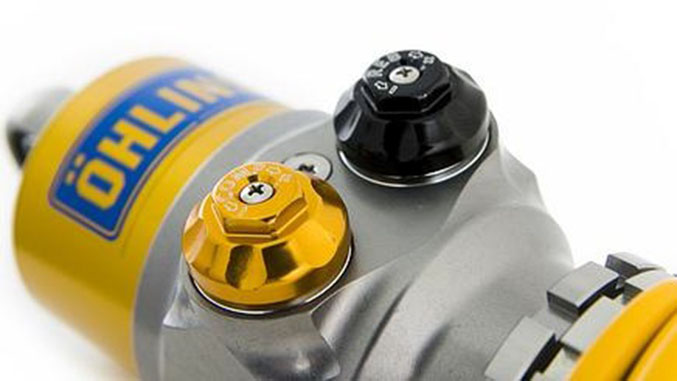A question that I’ve had asked of me a few times is how to deal with a car that understeers in the early part of a corner, and then snaps to oversteer towards the exit. It’s not an uncommon situation. I like to look at this type of problem from the driver’s perspective, and what the driver can do about it. But what about what can be done to the car? Fortunately, Rob Schermerhorn, who is a great driver coach, but also a shock absorber (damper) expert, offered to explain how to tune your shocks in this situation – and more. – Ross
Q: My car understeers entering corners, and oversteers exiting them. I just bought two-way adjustable shock absorbers. How can I use them to help my car’s handling?
A: Let’s start with big picture stuff:
99% of drivers/racers don’t know when to touch the damper adjuster knobs, so the $2,000 to $4,000 plus spent on high-quality damping is completely wasted….
Here’s what the 1% know: shocks/ dampers are timing devices.
In addition to controlling the up/down movement of the wheel, tire, hub, brake, and suspension, the shock has major control over how quickly load is transferred from tire contact patch to contact patch. That’s true for-aft, side-side, and in reality, as you enter or exit a corner, load is transferred diagonally.
Bottom line: If the handling problem is during the corner entry phase or corner exit, shocks are in your toolbox to solve that problem. If the handling issue is mid-corner (steady-state cornering), shocks are not to be touched.
For shocks with independent adjustment of bump and rebound, the rebound knob is your “go to” tool, as it controls the sprung weight of the chassis. Yes, you can also tune using bump (or low-speed bump for triple adjustable shocks), but I always go for rebound first, assuming shock adjusters have some baseline tuning already completed.
Back to the opening question
Based on experience, this driver has set ride height much too low; he’s contacting the bump rubbers, both in front and in the rear (but I’m sure the car has great “stance”). The solution (or at least first thing to try) is to raise ride height 0.5 inch to see if the problems are reduced in severity, if not eliminated.
It’s also possible that bump force is insufficient and the damper is quickly contacting the bump rubbers.
Pro tip: Get rid of the bump rubbers that are actually black rubber, and change to the yellow-ish/orange-ish BASF Cellasto® jounce bumper; it’s far more progressive upon contact, can be tuned for intensional contact as necessary in ground effect cars or circuits that are smooth (technically, Cellasto® is microcellular polyurethane, and not strictly only available from BASF – there are many great sources).
I would also ditch the popular “poly bushing” materials that are smooth and somewhat slippery to the touch, and commonly available in a rainbow of colors.
Then mock up your suspension under simulated corner load to see how much real travel you have, prior to contacting the jounce bumper. This is easily accomplished with tire removal, raising the hub to ride height with a floor jack.
7 Steps To Finding Your Perfect Shock Setting
Note current adjustment settings.
1. Set bump and rebound full soft
2. Do an out and in lap
3. Add bump in two click increments until the “feel” of steering improves, doing an out and in lap with each adjustment
4. Now add rebound in two sweep (or click) increments until car “feel” (driver confidence) improves
5. Back off by two clicks or more when lap time slows
6. Drive out/in laps for quick comparison (some drivers adapt swiftly to poorly handling cars, back-to-back comparison avoids driver input blurring the data)
Now do a longer-run A/B test with the new shock settings versus the settings you started with.
The above process is typically called a “shock scan.”
Conclusion
Don’t fear the adjuster! I talk to hundreds of guys every year who’ve made the investment in quality damping, only to leave the adjusters set to whatever the builder recommended, afraid they’ll mess up the handling. Take notes, then turn the knobs!
If you’re suffering slower lap times after making the jump to high-quality damping, that’s a key indicator you’re over-damped; go full soft on the adjuster and set a new baseline.
A couple years ago, I ran into an old buddy at a Gingerman track day who’d just installed $6,000 in dampers on his new Z06, but was kicking himself for creating a monster. Then just ten minutes of track time with adjusters set full soft, he was the happiest guy in the paddock…. Try it!
– Rob Schermerhorn



















